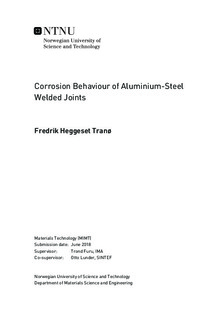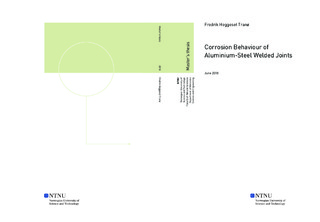| dc.description.abstract | Multi-material solutions is a hot research topic in the automotive industry. The possibility to combine the physical and mechanical properties of different materials in a car component can both increase passenger safety, weight and thus the fuel economy of cars in the future. The combination of steel and aluminium in car components can offer a better combination of structural integrity, impact resistance and weight savings compared to components made entirely from steel. In practice, suitable components such as the B-pillar, bumper and battery housing in electric vehicles, will be changed to aluminium. Steel brackets will then need to be joined to the aluminium which then again can be joined to the rest of the car's body.
The development of multi-material solutions in high-performance automotive components is accelerating the development of existing welding methods and also the invention of entirely new methods. Welding of dissimilar metals is a complex task due to potentially large differences in physical and mechanical properties and the demand for precision control and tailoring of weld parameters is high to achieve joints with superior mechanical properties. Aluminium-steel joints have already been used in the automotive industry, but the majority of the research published on this subject aims to improve mechanical properties while studies of the corrosion properties of such joints are reported more rarely.
In this project, two different heat-treatable aluminium alloys, AA6063 and AA6082, were joined to a zinc coated dual phase steel, HCT600, by a fusion welding method named Cold Metal Transfer. The materials and the welding method used in this project are relevant for automotive application. Prior to welding, the aluminium alloys were heat treated to an under-aged and a peak-aged temper condition referred to as T6x and T6, respectively. Four different material combinations were welded and Vickers hardness measurements were conducted to verify that the respective temper conditions were reached and to evaluate the effect of welding on hardness. After welding, tensile test specimens were prepared and subjected to an immersion corrosion test with acidified salt water as electrolyte. Tensile tests were performed before, during and after the corrosion test to evaluate the effect of corrosion versus time on the mechanical strength of such joints. In addition, metallographic and electrochemical examinations were carried out by the use of Light Optical Microscopy (LOM), Scanning Electron Microscopy (SEM) and Scanning Kelvin Probe (SKP) analysis were used to asses the materials both before and after corrosion.
Results revealed that the zinc coating, originally applied to the steel for corrosion protection and better wetting during welding, is causing the formation of zinc rich zones and phases in the filler material. These zones and phases corroded fast in the corrosive environment. Subsequently, this proved to be detrimental to the bond strength of such joints.
Hybrid Metal Extrusion and Bonding (HYB) is a new solid-state joining method developed by HyBond AS. This method is showing promising results in the joining of such joints without the use of zinc in the fusion zone. The test procedure performed in this work should be used to test HYB joints of the same materials when samples are ready for corrosion testing. | |

